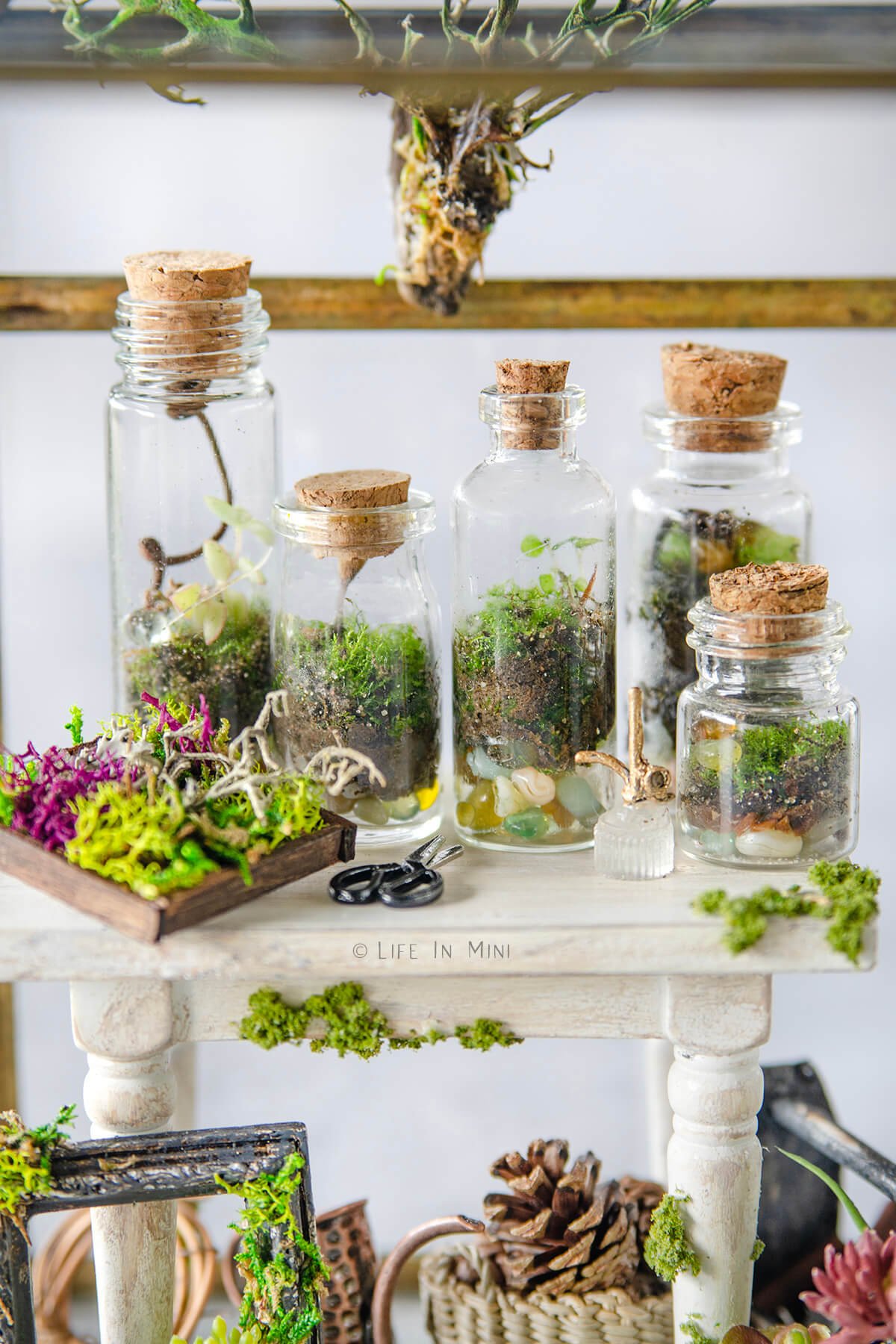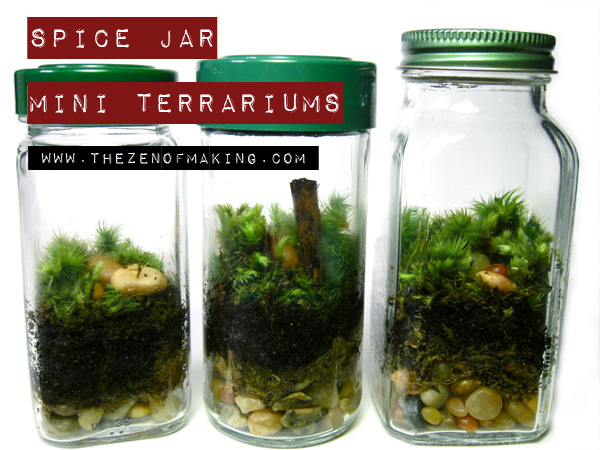Best soil for mini terrariums is a well-draining mix combining potting soil, peat moss, and sand. This blend ensures proper moisture and aeration.
Creating the ideal environment for mini terrariums starts with selecting the right soil. The soil must support plant health while maintaining moisture balance. A mixture of potting soil, peat moss, and sand achieves this by offering proper drainage and aeration.
Potting soil provides essential nutrients, peat moss helps retain moisture, and sand ensures good drainage. This combination prevents root rot and promotes healthy plant growth. Choosing the right soil mix is crucial for vibrant, thriving mini terrariums. With the right foundation, your miniature garden will flourish and remain a beautiful focal point in your space.

Credit: lifeinmini.com
Types Of Soil For Mini Terrariums
Choosing the right soil is crucial for mini terrariums. Different plants need different soil types. Let’s explore the best soil for mini terrariums.
Cactus And Succulent Soil
Cactus and succulent soil is perfect for plants that need well-drained soil. This soil mix usually contains:
- Sand
- Perlite
- Pumice
These components help water drain quickly. This prevents root rot. It also ensures the plants get enough air.
Tropical Plant Soil
Tropical plant soil is ideal for plants that love moisture. This soil mix often includes:
- Peat moss
- Coco coir
- Perlite
These ingredients retain water well. They also provide good drainage. This keeps tropical plants healthy and happy.

Credit: www.redhandledscissors.com
Essential Soil Components
Creating the perfect soil mix for mini terrariums is crucial. It ensures your plants thrive in their enclosed environment. The right components help maintain balance. They provide essential nutrients, proper drainage, and air circulation.
Organic Matter
Organic matter is a key component for mini terrariums. It helps retain moisture and provides nutrients. Compost and peat moss are excellent choices.
- Compost: Rich in nutrients, compost supports plant health.
- Peat Moss: Retains moisture and improves soil texture.
Drainage Materials
Proper drainage is essential for preventing root rot. Drainage materials ensure excess water escapes. This keeps your plants healthy.
| Material | Benefits |
|---|---|
| Gravel | Provides a sturdy base and allows water to drain. |
| Activated Charcoal | Filters water and reduces odors. |
| Sand | Improves soil texture and enhances drainage. |
Top Soil Brands
Choosing the right soil is crucial for mini terrariums. The soil provides nutrients, supports plant roots, and retains moisture. Below, we delve into some of the top soil brands that are perfect for your mini terrarium.
Brand A Overview
Brand A is renowned for its nutrient-rich soil. It’s ideal for a variety of plants. The soil mix includes organic matter and minerals. This combination ensures healthy plant growth.
| Feature | Details |
|---|---|
| Ingredients | Organic matter, minerals |
| Benefits | Promotes healthy growth |
| Packaging | Eco-friendly bags |
Brand B Overview
Brand B offers a specialized soil mix for mini terrariums. This soil is known for its excellent drainage properties. It prevents waterlogging and root rot, which is crucial for terrariums.
- Rich in essential nutrients
- Contains activated charcoal for odor control
- Lightweight and easy to handle
Both Brand A and Brand B offer high-quality soil options. They ensure your mini terrarium thrives. Choose the one that best fits your plant’s needs.
Diy Soil Mixes
Creating your own soil mix for mini terrariums is rewarding and fun. DIY soil mixes let you control the health and growth of your plants. Crafting the perfect blend ensures your mini ecosystem thrives beautifully.
Ingredients Needed
- Potting Soil – Provides essential nutrients for plants.
- Coconut Coir – Helps retain moisture and improve aeration.
- Perlite – Enhances drainage and prevents soil compaction.
- Activated Charcoal – Keeps the soil fresh and reduces odors.
- Sand – Improves drainage and prevents root rot.
Step-by-step Guide
- Start with a clean container for mixing.
- Add 2 parts of potting soil to the container.
- Mix in 1 part of coconut coir. This keeps the soil airy.
- Add 1 part of perlite. This will help with drainage.
- Sprinkle 1 part of activated charcoal. This keeps the soil fresh.
- Add 1 part of sand. This prevents the soil from being too wet.
- Mix all ingredients well until fully blended.
Use this mix as the base for your mini terrarium. This blend ensures your plants have the right balance of nutrients, moisture, and air.
Common Soil Problems
Maintaining the right soil in mini terrariums can be challenging. Even seasoned enthusiasts face common soil problems. These issues often hinder plant growth and terrarium health. Identifying and addressing these problems is crucial for thriving mini ecosystems.
Overwatering Issues
Overwatering is a frequent mistake in terrarium care. Excess water creates a soggy environment. This can lead to root rot and mold growth. To avoid overwatering, use a spray bottle. Mist the plants gently instead of pouring water.
Another tip is to add a drainage layer. Place small pebbles or activated charcoal at the bottom. This helps excess water drain away from the soil. Adding a drainage layer keeps the roots healthy and dry.
Nutrient Deficiencies
Nutrient deficiencies can stunt plant growth in mini terrariums. Without proper nutrients, plants appear weak and discolored. To combat this, use a balanced potting mix. Look for mixes specifically designed for terrariums.
Additionally, consider adding slow-release fertilizers. These provide steady nutrients over time. Fertilizers should be used sparingly. Over-fertilizing can burn the plants and harm the ecosystem.
Maintaining a healthy soil environment is crucial. Regularly check the soil for signs of nutrient issues. This proactive approach ensures vibrant and healthy plants.
| Problem | Solution |
|---|---|
| Overwatering | Use a spray bottle and add a drainage layer. |
| Nutrient Deficiencies | Use balanced potting mix and slow-release fertilizers. |
:strip_icc()/various-terrariums-fea7e5d6-ecacb7d264ed494fb17835e857b3b53c.jpg)
Credit: www.bhg.com
Maintenance Tips
Maintaining a healthy mini terrarium requires regular attention and care. Proper soil maintenance ensures your miniature plants thrive. Below are some vital tips to keep your terrarium soil in perfect condition.
Regular Soil Checks
Frequent soil checks are crucial for a thriving mini terrarium. Inspect the soil every week. Look for signs of dryness, mold, or pests. Ensure the soil remains moist, but not waterlogged.
Use a moisture meter to monitor soil moisture. This tool helps you know when to water your terrarium. Overwatering can lead to root rot, while underwatering can dry out the plants.
Avoid compacted soil. Gently loosen the top layer of soil using a fork or small tool. This allows air circulation and promotes healthy root growth.
| Check Type | Frequency | Tools Needed |
|---|---|---|
| Moisture Level | Weekly | Moisture Meter |
| Soil Compaction | Monthly | Small Fork |
| Pests or Mold | Weekly | Visual Inspection |
When To Replace Soil
Knowing when to replace soil is vital. Replace soil when it becomes compacted or loses nutrients. Soil replacement should occur every 6-12 months. This timeframe ensures your plants have fresh, nutrient-rich soil.
Signs that soil needs replacing include poor plant growth, persistent pests, or mold. If you notice these signs, it’s time to change the soil.
Follow these steps to replace soil:
- Gently remove plants and place them on a clean surface.
- Discard the old soil and clean the terrarium container.
- Add fresh, high-quality potting mix suitable for mini terrariums.
- Replant the plants carefully, ensuring roots are covered.
- Water lightly and monitor for a few days.
Fresh soil boosts plant health and growth. Regular soil replacement prevents nutrient depletion.
By following these maintenance tips, your mini terrarium will flourish. Happy gardening!
Frequently Asked Questions
What Type Of Soil Is Best For Mini Terrariums?
The best soil for mini terrariums is well-draining and nutrient-rich. A mix of potting soil, peat moss, and perlite works well.
Can I Use Garden Soil In A Mini Terrarium?
No, garden soil is too dense and can cause poor drainage. It may also contain pests and diseases.
How Do I Prepare Soil For A Mini Terrarium?
Mix potting soil with peat moss and perlite. This combination ensures good drainage and retains moisture without becoming waterlogged.
Should I Use Activated Charcoal In My Mini Terrarium?
Yes, activated charcoal helps keep the soil fresh. It removes toxins and prevents odors, promoting a healthy environment.
Conclusion
Choosing the best soil for mini terrariums ensures healthy plant growth and longevity. Quality soil mix retains moisture and provides nutrients. Remember to consider your plant’s specific needs. With the right soil, your mini terrarium will thrive beautifully. Happy gardening and enjoy your lush, green oasis!
